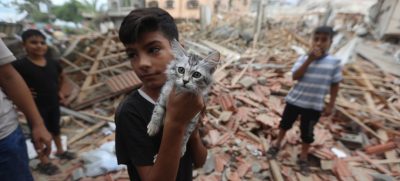Toll of Israel-Palestine Crisis on Children “Beyond Devastating”. UN Report

All Global Research articles can be read in 51 languages by activating the Translate Website button below the author’s name.
To receive Global Research’s Daily Newsletter (selected articles), click here.
Click the share button above to email/forward this article to your friends and colleagues. Follow us on Instagram and Twitter and subscribe to our Telegram Channel. Feel free to repost and share widely Global Research articles.
***
UN relief chief Martin Griffiths, who has been visiting Israel and the Occupied Palestinian Territory, spoke to families in Gaza over the phone from east Jerusalem on Tuesday and said that what they have endured since the start of Israel’s retaliation for Hamas’ deadly 7 October attacks is “beyond devastating”.
“When an eight-year-old tells you that she doesn’t want to die, it’s hard not to feel helpless,” he wrote on social platform X.
Hostages’ Families ‘Living in Agony’
On Monday Mr. Griffiths met in Jerusalem with family members of some of the more than 230 hostages held in Gaza since 7 October. Reportedly about 30 of them kidnapped by Hamas terrorists are children.
The UN relief chief said that for the past weeks these families “have been living in agony, not knowing if their loved ones are dead or alive”, and that he couldn’t “begin to imagine” what they are going through.
The UN has repeatedly called for the immediate and unconditional release of the hostages.
‘Unbearable’ Thought of Children Buried Under Rubble
Reportedly more than 3,450 children have been killed in Gaza according to the Hamas-run Ministry of Health, UN Children’s Fund (UNICEF) spokesperson James Elder told reporters in Geneva on Tuesday.
Another 1,000 children have been reported missing and may be trapped or dead under the rubble, awaiting rescue or recovery, UN humanitarian affairs coordination office OCHA said.
OCHA spokesperson Jens Laerke said that it is
“almost unbearable to think about children buried under rubble with very little possibility for getting them out”.

© UNICEF/Mohammad Ajjour | An 11-year-old boy stands at the entrance to his home in Gaza City.


